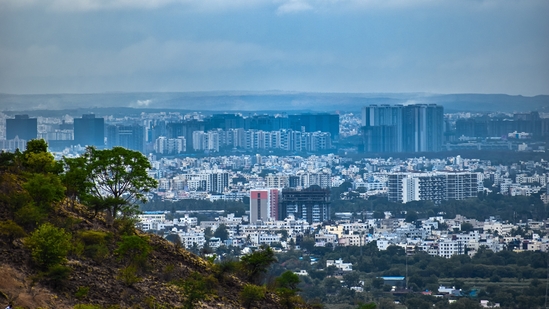‘600 GW non-fossil fuel capacity needed to meet power demand’
The study, titled “How Can India Meet Its Rising Power Demand? Pathways to 2030,” is the first to model India’s power system dispatch for every 15 minutes in 2030.
India needs to scale up its non-fossil-fuel capacity to 600 gigawatts (GW) by 2030 to meet growing electricity demand reliably and affordably, according to a new study by the Council on Energy, Environment and Water (CEEW).

The study, titled “How Can India Meet Its Rising Power Demand? Pathways to 2030,” is the first to model India’s power system dispatch for every 15 minutes in 2030.
According to the study, if electricity demand grows as projected by the Central Electricity Authority (CEA), India’s existing, under-construction, and planned generation capacities would be adequate to meet power needs in 2030.
However, if power demand outpaces current projections due to climate change-induced warming or strong economic growth, a high renewable energy (RE) pathway of 600 GW of non-fossil capacity offers the most viable solution, the researchers concluded.
“This would include 377 GW of solar, 148 GW of wind, 62 GW of hydro, and 20 GW of nuclear energy,” the CEEW study stated.
The study projects that deploying 600 GW of clean energy across more states could reduce generation costs by 6-18 paise per unit, eliminate the need for new coal plants, save between ₹13,000 crore and ₹42,400 crore in power procurement costs, create 53,000 to 100,000 additional jobs, and cut carbon emissions by 9-16% compared to FY24.
In a separate development, the parliamentary standing committee on energy released a report on the ministry of new and renewable energy’s demand for grants.
The report, released on Wednesday, found that the ministry had projected a budgetary requirement of ₹41,343.19 crore for the financial year 2025-26, against which an amount of ₹26,549.38 crore has been allocated—a reduction of about 36%.
The report also revealed that about 91.2% of the ministry’s budget is allocated for only one component: solar energy. Within the solar energy component itself, about 82.5% of the budget is for implementing the PM Surya Ghar: Muft Bijli Yojana.
This scheme, launched by the government in its 2024-25 budget for rooftop solar plant projects with an investment of over ₹75,000 crore, is to be implemented until FY 2026-27. It provides a subsidy of 60% of the solar unit cost for systems up to 2kW capacity and 40% of additional system cost for systems between 2 to 3kW capacity.
The CEEW report emphasised that a varied renewable energy mix spread across states will help meet demand reliably and at a lower cost.
According to the study, the additional 75 GW of solar could be distributed across more states, such as Kerala, Bihar, Punjab, West Bengal, Odisha, and Telangana. Similarly, 25 GW of additional wind capacity can be installed in states such as Madhya Pradesh, Maharashtra, Tamil Nadu, Karnataka, and Rajasthan.
“Diversified renewable energy deployment will halve the unmet demand in the 600 GW-high demand scenario relative to the 500 GW-high demand one. Additionally, 6 GW of transmission enhancement across states could be avoided,” the report noted.
The researchers warned that failing to meet the 2030 non-fossil target will lead to suboptimal outcomes.
“If India achieves only 400 GW of non-fossil capacity by 2030, and the demand grows more than anticipated (as modelled in the 400 GW-high demand scenario), the unmet demand will be 0.62%, double of that projected in the 500 GW-high demand scenarios,” the authors stated.
To meet demand reliably in this scenario, 16 GW of new coal capacity would be needed beyond existing and under-construction assets, which would likely take more than five years to build.
Other consequences would include the need for significant enhancement of interstate and interregional transmission limits, higher system costs by ₹30,000–42,400 crore in 2030 compared to the 500 GW and 600 GW high-demand scenarios, and a 17% increase in power sector emissions over FY24 levels.
“We have set ambitious targets to increase the capacity of non-fossil fuels and reach net zero by 2070. These goals are essential for a Viksit Bharat,” said Shripad Yesso Naik, minister of state for power and new and renewable energy, in a statement on Wednesday.
“Our clean energy journey has been remarkable—from 76 GW in 2014 to 220 GW in 2025 of non-fossil capacity. CEEW’s report is very timely in highlighting the pathways on this journey until 2030,” Naik added.
According to India’s updated Nationally Determined Contribution (NDC) under the Paris Agreement in August 2022, the country aims to reduce emissions intensity of its GDP to 45% by 2030 from the 2005 level and increase the share of non-fossil fuel-based energy resources to 50% (500 GW) of its installed power generation capacity by 2030. India is yet to update its NDC for the 2035 period.
In the standing committee report, the ministry stated that it is working toward achieving 500 GW of installed electricity capacity from non-fossil sources by 2030.
As of January 31, 2025, a total of 220.36 GW of non-fossil power capacity has been installed in the country. This includes 212.18 GW of renewable energy (including large hydro) and 8.18 GW of nuclear power capacity. Non-fossil power currently has a share of 47.26% in the total installed electricity capacity of 466.26 GW.






